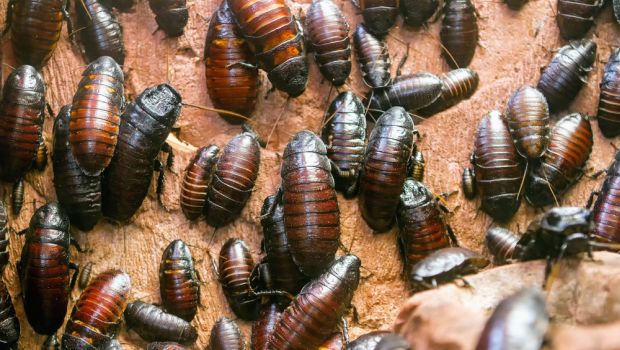How to Keep Pests Out of Your Self-Storage Facility
Nothing can spoil a tenant’s perception of a self-storage facility faster than finding an infestation of bugs or rodents in a unit. Guest blogger Jonathan Fesmire from Storagefront.com offers tips on how to protect a property against pests, whether you hire an exterminator or take on the task alone.
March 3, 2017

Nothing can spoil a tenant’s view of a self-storage facility quite like entering his unit and finding a pest infestation. In short, it’s worth the cost to protect your facility and units from the various rodents and bugs that can damage property and spread disease.
Getting rid of and protecting against pests is specialized work. To do it right, you should really consider hiring an exterminator. You can do it yourself, but your mistakes could end up costing extra money. That being said, let’s take a look at some of the basics, so that if you choose to do the work yourself, you’ll have a starting point. Similarly, if you choose to hire an exterminator, you’ll have some idea of what they’ll do.
Hiring an Exterminator
What’s the climate like in your area? What sort of pests lurk among the plants and within the walls? These factors will determine not only what the exterminator needs to do to protect your self-storage facility, but also how often the site will need to be serviced. Get a written estimate from an exterminator who has thoroughly examined your property.
Make sure your provider informs you of what will be done. This may include spraying around the property, setting rat and mouse traps in certain areas, sealing up cracks and more.
Facility Preparation
There are several things you can do around the property to discourage pests. First, there’s the design of the self-storage facility itself. Make sure that landscaping—meaning trees and other plants—are near the office for curb appeal but away from the storage units. This will help prevent various bugs from migrating from the plants to the units.
Even small cracks can let in pests like ants, cockroaches and spiders. If possible, make sure all units are air and water tight. Seal spaces around pikes and in the walls with silicone-based caulk.
Don’t forget to dispose of garbage regularly. The longer it’s left out, the more pests will find it and breed in it.
Pests get thirsty and are highly attracted to water. As much as possible, keep water out of and flowing away from units. This means ensuring roof-gutter systems carry water away from the buildings and into drains.
Advise Your Tenants
Make sure your tenants know they can also assist in preventing pest infestations. Here are a few important steps:
When possible, use plastic boxes/bins instead of cardboard boxes, as some pests eat cardboard.
Definitely avoid using cardboard boxes from grocery stores. These may have food residue.
Don't store perishable foods.
Consider leaving some moth balls or cotton balls dipped in peppermint oil around the inside of units, as these can ward off rodents.
Consider spreading a light layer of roach powder (borax) where the unit walls meet the floor. This helps kill roaches and ants.
Don’t store mattresses or bedding that have bed bugs. If unsure, spray affected bedding with insecticide and vacuum it. Wash blankets, pillow cases and sheets before storing them.
Partnering with a professional exterminator and following the rest of these guidelines should significantly cut down on any pest problem and make tenants happy to store with your facility.
Jonathan Fesmire is a copywriter at Storagefront.com and writes articles for the company’s blog, “The Renter’s Bent.” In 2011, he earned a Master of Fine Arts from Academy of Art University.
About the Author(s)
You May Also Like





